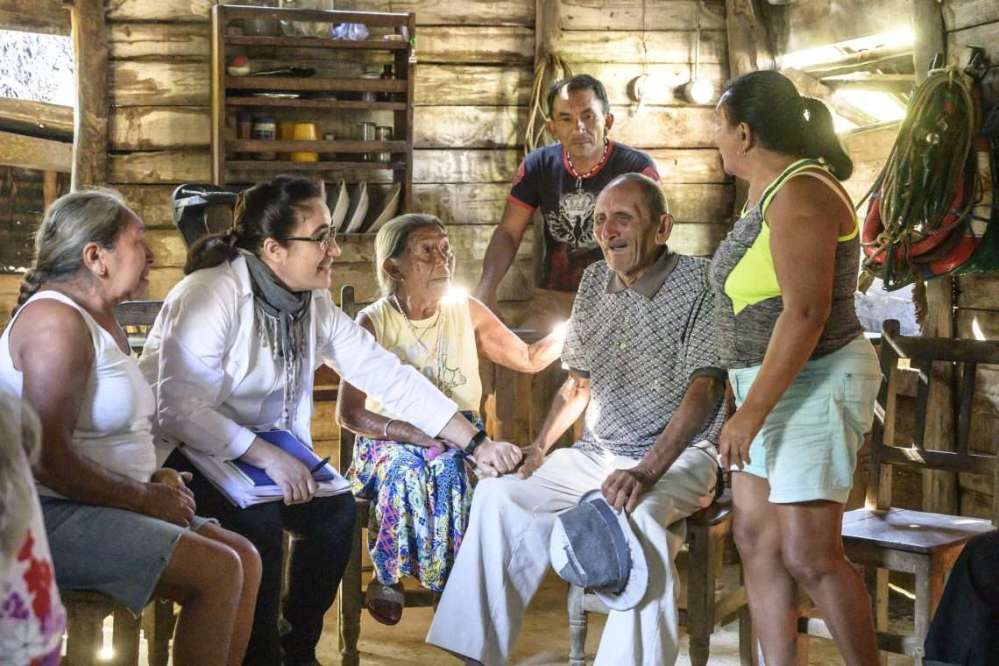Gore Vidal once defined the history of humanity as a history of movement, of migration. While this can have many positive effects, the obverse is that the history of humanity can also be read as a history of violence, caused by the displacement of humans, and squabbles over resources.
The most obvious example of this is the history of colonialism, a history that has recently been interrogated and found wanting, and the Caribbean is a perfect site for investigation. The British spearheaded the process of colonisation with Saint Kitts in 1623 and Barbados in 1627, soon to be followed by the French, whose colony Haiti would take inspiration from the French Revolution to stage the first anti-colonial revolution, from 1791 to 1804. We are, of course, principally interested in Cuba, and what the Spanish were up to there. But what they all they had in common was their role as sties of slavery, with some 40 percent of enslaved Africans shipped there.

Obviously, there are no lands without people, and the original inhabitants of Cuba and most of the Caribbean were the Taino, a group of Arawak indigenous people. Columbus would refer to these people as “Indians”, a term that came to stick to all the indigenous peoples of the Americas. He wrote: “They traded with us and gave us everything they had, with good will…they took great delight in pleasing us…They are very gentle and without knowledge of what is evil; nor do they murder or steal…Your highness may believe that in all the world there can be no better people…They love their neighbours as themselves, and they have the sweetest talk in the world, and are gentle and always laughing.”
While Columbus may have indulged in propagating myths of noble savages on paper – the name ‘Taino’ translating as ‘good people’ – in practice the conquistadores treated them quite brutally, pushing their hospitality to the extent of demanding tributes, which, if they were not paid, would see the Tainos having their hands cut off, and left to bleed to death. These practices would lead to a revolt in Hispaniola (the contemporary Haiti and Dominican Republic), which would be ruthlessly put down.
But, what happened to the Taino? It has often been assumed that they were driven to extinction as an ethnic group, partially through ethnic cleansing at the hands of the colonisers, but mainly by succumbing to infectious diseases, to which they had no acquired immunity. The first recorded smallpox outbreak in Hispaniola occurred around December 1518 or January 1519. This would reach epidemic proportions, wiping out 90% of the indigenous population.
It would be natural to assume that this would amount to extinction, or extermination, and that the only surviving remnants of the Taino culture are the beautiful artefacts they produced, such as zemis (sculptural figures that depicted gods or ancestors), duhos (wooden ritual seats) three-pointer stones and celts. Other cultural markers linger; the words ‘canoe’, ‘hammock’, ‘tobacco’, all loan words from Taino. All of these words signify cultural practices which testify to the sophistication of their culture, which was matrilineal, ordered around religious and spiritual rites, agriculture and maritime life. In short, they were not a martial culture, and could not possibly combat the Spanish in a fair fight.


However, a growing body of evidence indicates that rather than being wiped out, the Taino were actually assimilated into the new dominant culture. The Spanish arrived without women, and would take Taino women as common law wives, or just subject them to sexual assault. Therefore, even if the strictly indigenous population had dwindled to less by 500 by 1548, their bloodlines would be circulating amongst the new colonisers, creating a Creole people. Since about 1840, there have even been attempts to create a quasi-indigenous Taino identity in rural areas of Cuba, with some people who fled the Spanish to exist in palenques (hidden areas) in the densely forested area of Baracoa, which were cut off from the rest of society until 1964. The rest of Cuba wasn’t entirely sympathetic. José Martí, the poet and apostle of independence, would write in his diaries of how he was tracked by ‘indios de Garrido’ – ‘Indian’ scouts under the leadership of the Spanish lieutenant Garrido.
Fidel Castro with his vision of the ‘New Man’ was striving to create a new, post-racial Cuba, so had little time for the complexities and nuances of racial identity. When the leading Afro-Cuban filmmaker Nicolás Guillén Landrián went to Baracoa to film, he concentrated on the Afro-Cuban population he found there, but his haunting film “Retornar a Baracoa” comes to a bleak conclusion for all – “Baracoa is a prison with a park”.
However, the Taino identity is no longer considered to be a threat to cubanidad (Cuban identity, and is even considered an asset. One startling factor leading to this reappraisal was the collapse of the Soviet Union, and the subsequent ‘Special Period’, when a society desperately short of food and medicine found that indigenous knowledge of traditional agriculture and natural medicines had their place in society. Now, in a different society and culture, caseiros (communities of Taino descendents) have even become attractions for adventurous tourists, who hopefully won’t become another threat to their unique way of life.
Om Sat 18 November, Havana Glasgow Film Festival invited Héctor Garrido to present his latest research into Amerindian heritage on the island, and explore the vitality of the surviving culture.

